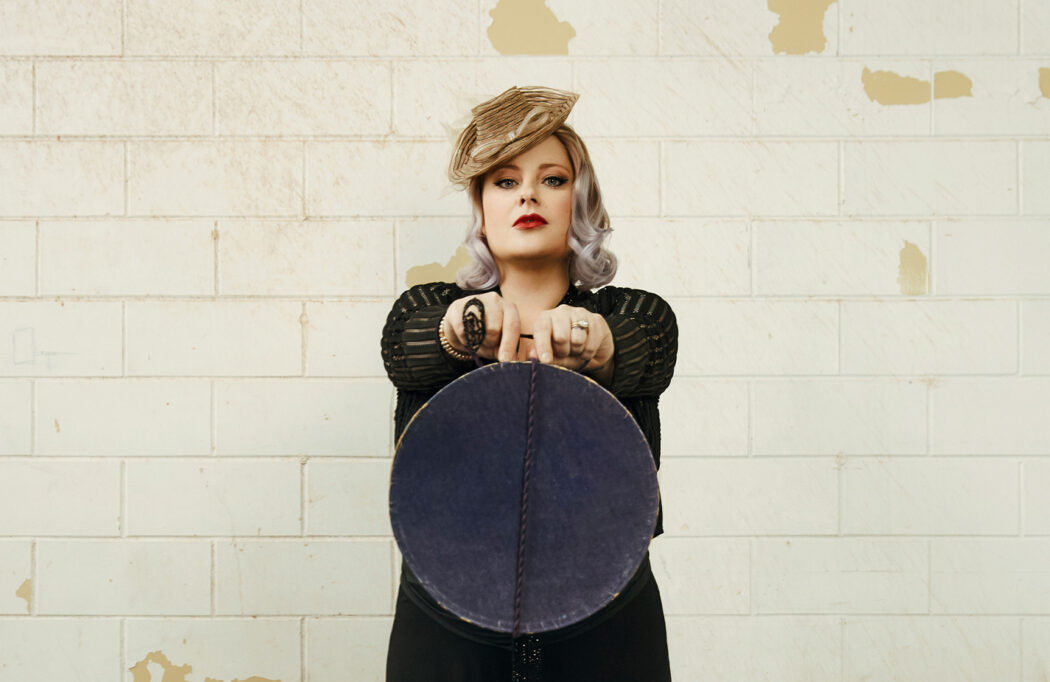The Hands Behind the Derby Hats
When the Kentucky Derby comes around the bend, there are a couple things that might come to mind. Thoroughbreds (horses that is), bourbon, roses and derby hats. These fancy, bright-colored hats, elaborately covered with feathers, baubles, glitter and more, are just as much a part of the culture of the first race of the Triple Crown as the two-week long festival that celebrates the Derby and brings the town to life. These hats are so extravagant, odds are you’ll never see the same one twice. But what goes into Derby hats and why are they such a prominent part of the Kentucky Derby? Featured Milliner of the 148th Kentucky Derby and owner of Formé Millinery Jenny Pfanestiel sat down with us over a glass of Rabbit Hole Bourbon to tell us all that goes into the craft of making hats for the Kentucky Derby.
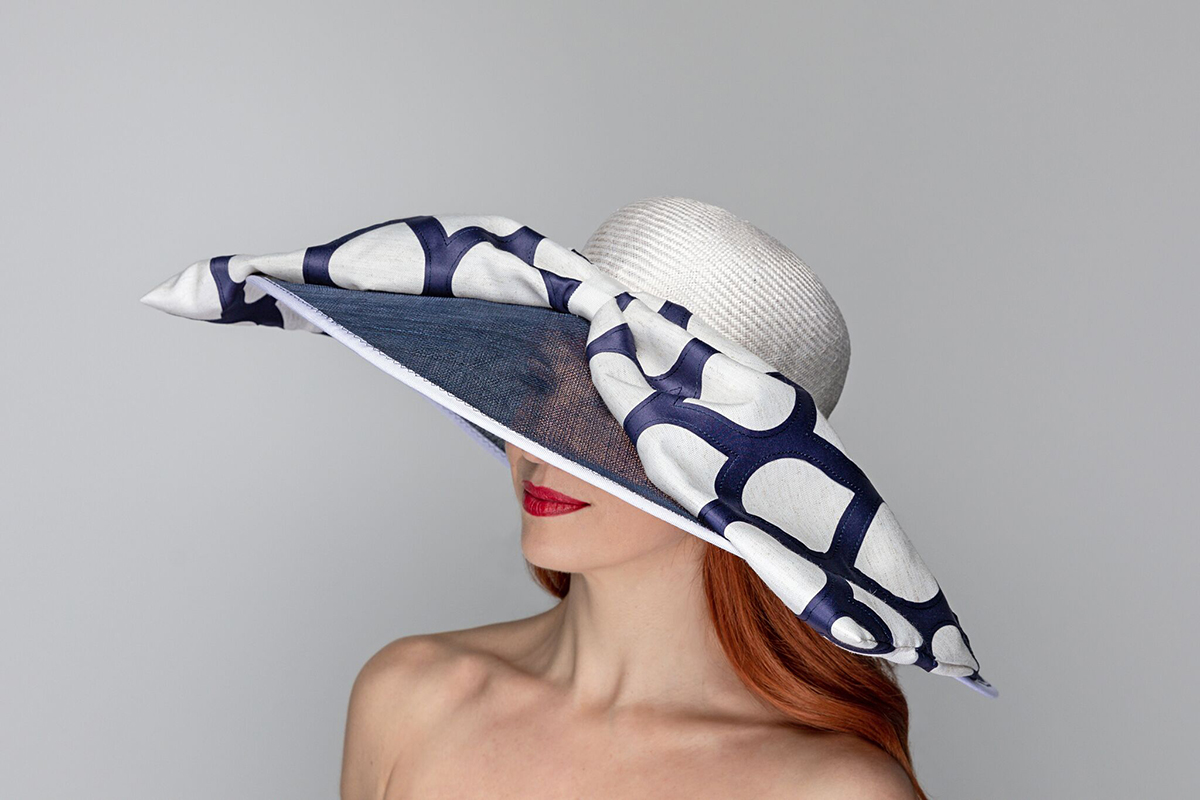
What originally sparked your interest in millinery? Knowing you grew up sewing in your family, what led you to get into couture women’s hats, especially those elegant enough for the Kentucky Derby?
Jenny Pfanestiel: I have always loved hats and was interested in learning the traditional techniques of hat-making, so I went to Australia and did an apprenticeship. Because I grew up hand sewing, creating hats from scratch came natural to me, so I switched from making costumes to making handmade hats. I have always been drawn to old things—learning how to make hats by molding material over old wooden hat forms, some dating back hundreds of years intrigued me. Originally, I made hats as a hobby, but about ten years ago I met someone from Louisville while living in Chicago at the time, and she talked about the Derby and thought my hats would do well there. That following year, I traveled to Kentucky to create hats for the Derby and fell in love with the town, the people, and was amazed with how much support the town has/had for small businesses. Very different from a big city. For five years, I traveled to Kentucky creating custom work for the Derby until my family and I finally moved here seven years ago.
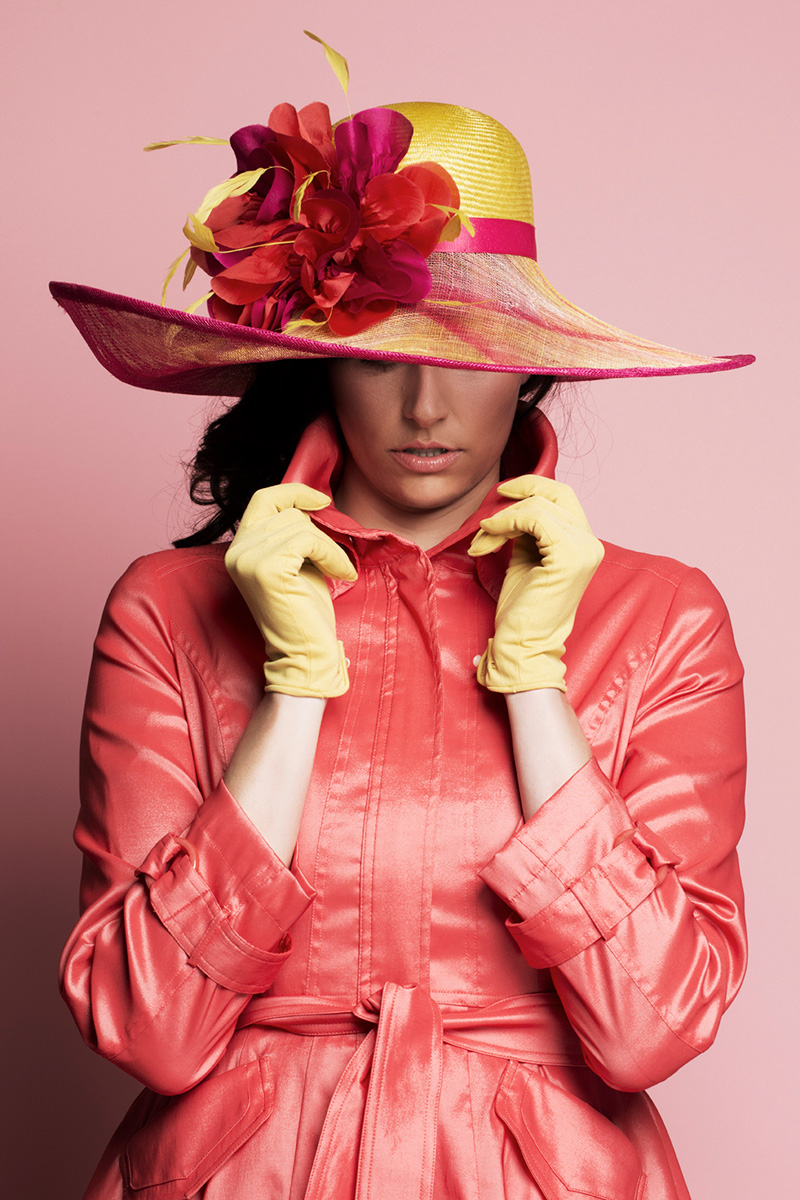
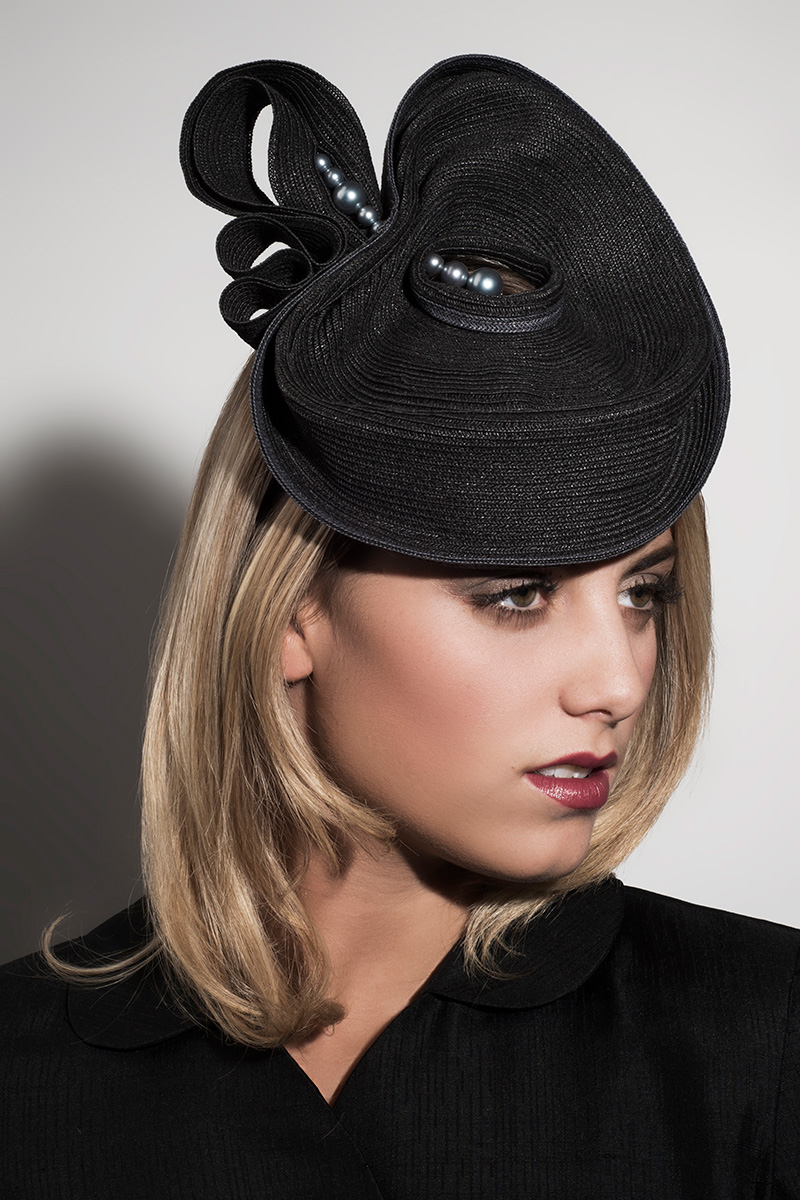
How did you become the featured milliner of the Kentucky Derby? What led up to this?
JP: Ever since I started making hats as a hobby in my basement 14 years ago, my passion for the craft grew. When I moved to Kentucky, I was able to open a storefront. This was a huge leap from having a dining room that converted into a showroom in my row house on the southside of Chicago. After opening a hat shop, it was full speed ahead as far as commitment and making my passion of making couture hats take me somewhere. I knew life had changed for me at that moment and I wasn’t looking back. Through the years, I was featured in many local and international media outlets—magazines, TV shows and movies were coming to my shop to take pictures and/or film me at work. I like to believe the nostalgia of a hat shop in modern times brought back memories of when people didn’t leave the house without a hat and gloves. I was becoming known throughout the racing community—particularly the Derby—for my one-of-a-kind sculpted hats. People from all over the world saw the unique creations I was making whether it be through traditional hat-making techniques, or creating my own style of hats on my braid machine from the 1800s.
Through all of this, I was able to make great connections with the community, including a relationship with Churchill Downs. I believe they saw my dedication and passion for hat-making and were intrigued that I took traditional and nontraditional techniques of couture hat-making and made it my own as a modern-day milliner. At this point, hat-making was no longer a hobby for me but a way of life, and how I supported my family. I was not a seasonal hat maker that came and went when Derby was over. I was committed to being a part of the local community as a woman-owned business. Having a year-round hat shop in Louisville allows me to work with Churchill Downs throughout the year and provide a unique partnership. I offer hat shop tours where visitors can see the raw hat materials and hat blocks up close, they can see my personal workspace where I make each hat, and I offer hat-making workshops where I teach how to make hats from scratch using 100-year-old hat blocks.
This will be my third year partnering with Churchill Downs as the Featured Milliner of the Kentucky Derby. This is truly an honor, not only to be recognized for my passion and craft of millinery, but also because I am the second Milliner in 148 years to ever be featured by Churchill Downs for the Kentucky Derby.
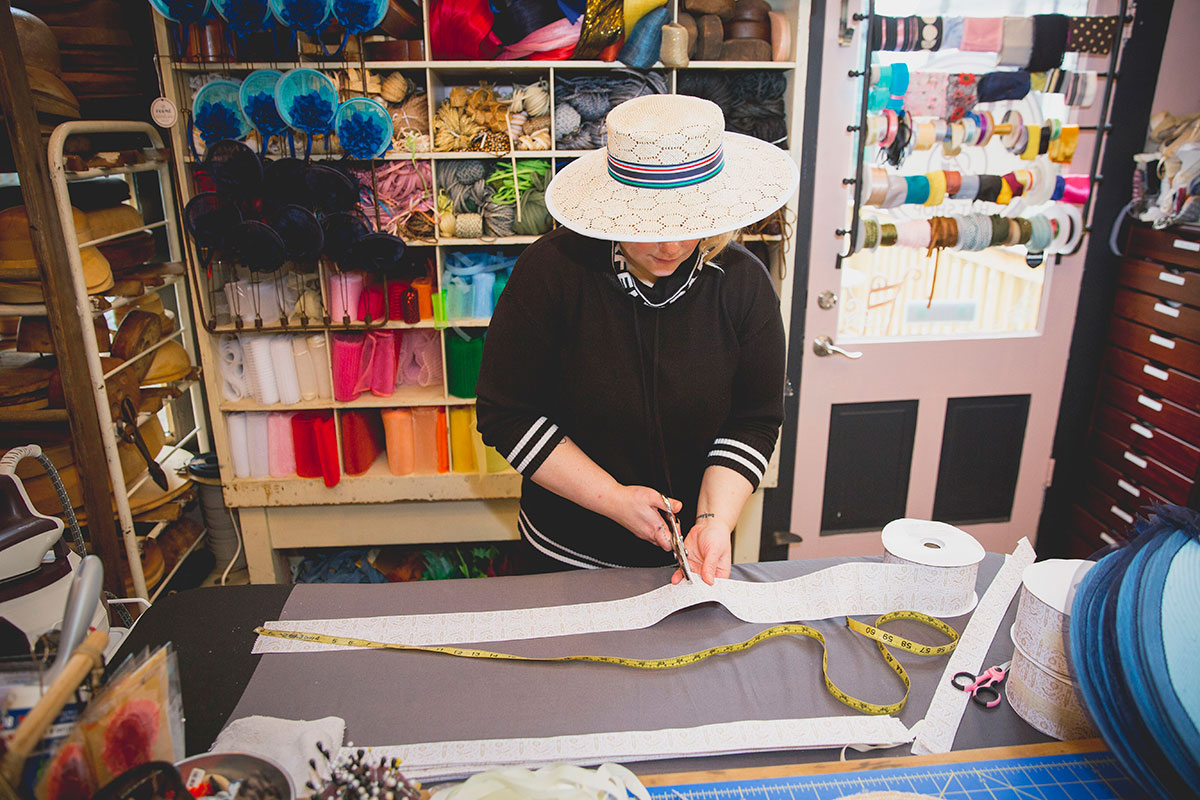
Where do you draw inspiration from when creating your hats? You have so many different styles, walk us through your process of production from start to finish.
JP: I create hats for all seasons and occasions, so my style changes throughout the year. I have been told one can always spot a Formé Millinery hat and I would have to agree. My inspiration does not come from trends, but from my hat-making materials and hat blocks.
I actually do not sketch my ideas. I can’t draw. I create my hats by working with the material in my hands and letting it become what it wants. The same goes with my sculpted work. When making a headpiece on my 200-year-old braid machine, I move my wrist and fingers to allow the braid to sculpt into different shapes as the braid is being sewn together. I never force an idea or material; it never turns out the way you envision. Instead, I guide the material in the direction it naturally wants to flow. This might also explain why every hat I make is one of a kind. No two hats are alike. Even if I am collaborating with a company to make a limited edition of a particular style, each one will be slightly different because they are handmade.
I also draw inspiration from the materials themselves. When blocking a hat on an old form, I often think about the people that once made a hat from the same form and allow their energy to come through in the making of that hat. I also love to collect vintage trims, especially those made in France from the ’20s and ’30s which no longer exist. To think about the person who hand-wove the delicate trim that adorns my workspace makes me appreciate the craftsmanship of every piece that goes into my hats even more so.
When wearing a Formé Millinery hat, you are wearing a piece of history. Starting from the 100-year-old hat block or braid machine from the 1800s to create the hat base. Then finished with delicate trimmings from France made in the ’20s, or a hand-sculpted embellishment made by me. Finally, I take all these elements and make a modern-day hat with a lot of history, a little bit of me, and a little bit of the customer who helped with the idea of what they ultimately wanted.
Most hats take about 3 to 4 days from start to finish. Blocking the material over the hat mold takes 1 to 2 days just for the material to dry in its shape. Then the crown and brim need to be sewn together (by hand), edging and sweatband finished, then finally the embellishments added. If it is a complicated custom hat (like a cigarette in an ashtray, which I did recently) it can take about a month to complete. But, having a hat shop (and website), I always have ready-made hats available for men and women.
When putting on a hat, it always changes how you feel. You stand a little taller, you smile a little bigger.
If you could describe your personality through a hat, what would it look like?
JP: That is what is wonderful about wearing hats, you can be whoever you want to be. When putting on a hat, it always changes how you feel. You stand a little taller, you smile a little bigger. A hat can make you feel sassy, comfy, or flirty. Sometimes, when I am attending an event, I like to dress from a certain era. The ’40s being my favorite, I dress with a sense of elegance and mystery. My hat would be black in color, simple in style with delicate beaded details around the brimmed edge. A single thin feather peeks through an intentional pleat on the side and is finished with a honeycomb veiling that falls just below my eyes. I stand with confidence without revealing too much of myself. I am an observer scanning the room as I sip from my martini glass.
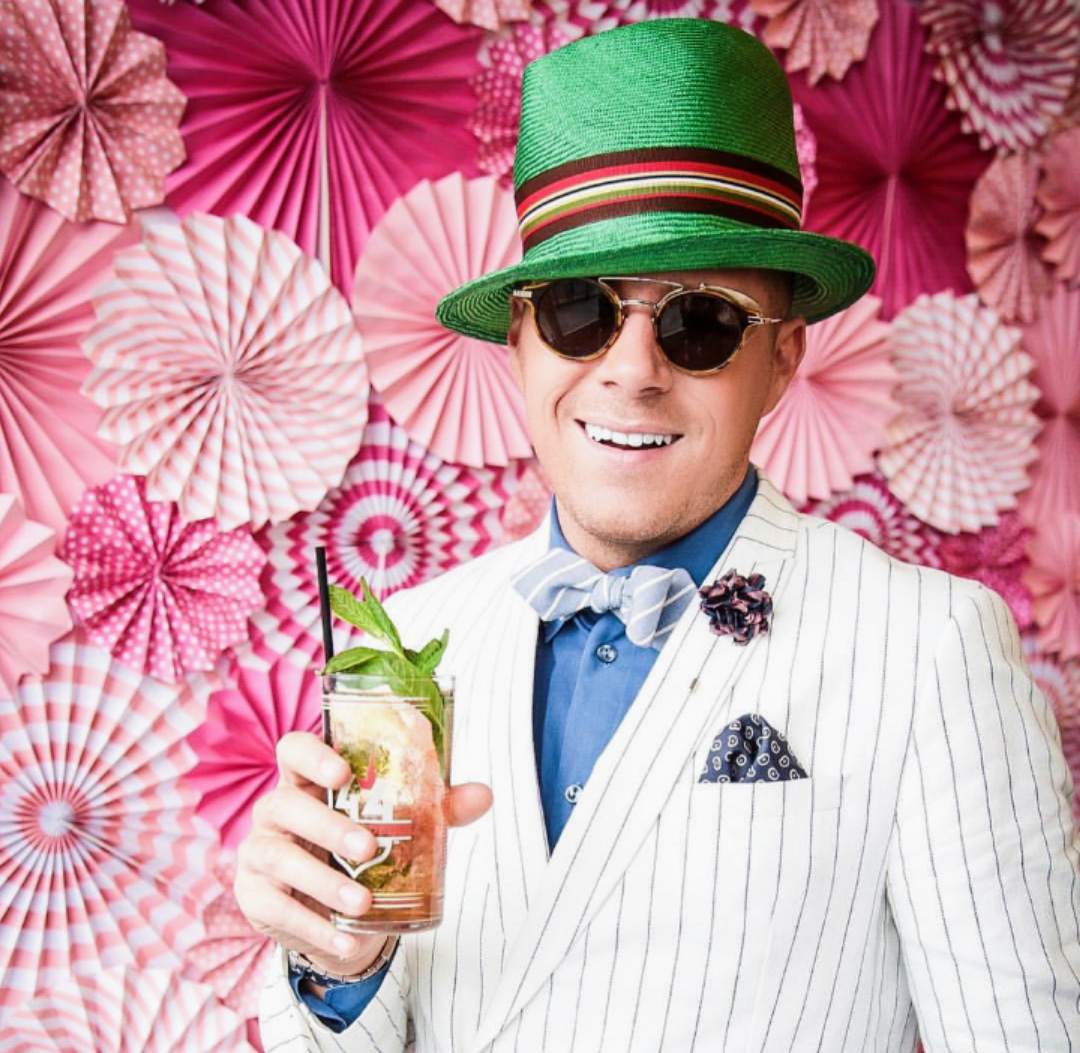
Most rewarding thing of being able to see your hats featured and worn throughout the Kentucky Derby?
JP: To this day, I still pinch myself seeing my hats at the Kentucky Derby in person, or at home watching the race on TV. To think about where this all started as a hobby in my basement and to see what has come from my struggles and triumphs to be where I am today, I am truly grateful.
Walk us through the months leading up to the Kentucky Derby—what’s the energy like in Louisville, how many hats are you making per day, favorite style of hat to make for the Derby, etc.
JP: Derby in Kentucky, especially Louisville, is electric. The whole town is preparing for a month-long party of parades, fashion shows, bourbon, hats and horses. At this point, I am spending 12 to 15 hours a day at the hat shop, seven days a week working on custom orders. My seamstresses are hard at work putting the final touches on hat collections that will be shipped to boutiques and horse tracks. During business hours, the hat shop is buzzing from the moment we open to the moment we close. While juggling the custom work, I am also preparing for groups who are coming to town where I will be providing a private hat-making experience for anywhere from 15 to 500 people. I also participate in TV appearances, Zoom interviews and photo shoots for those who want to see my latest hat collection. It certainly is a lot in a short period of time, but the excitement and energy of the town keeps you going. It is hard to say how many hats I will make during this time. Though I will mention, everyday there is always a hat being made, a hat being finished, a hat being tried on, and a hat being shipped. My hat-making for Derby starts the day after Derby ends for the following year. It is busy, it is exciting, it is stressful, and it is rewarding.

